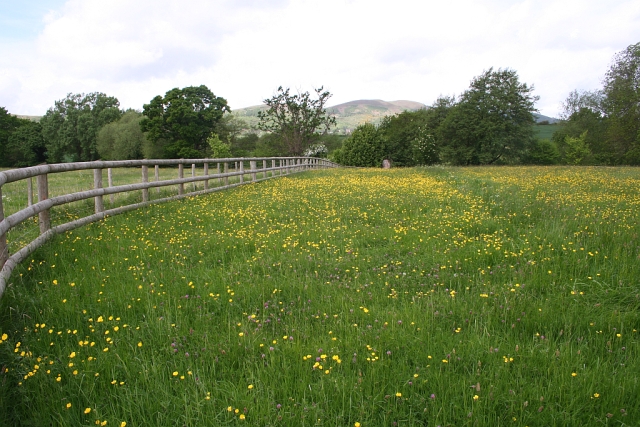Beware the Poison in your Paddocks!
Beware the Poison in your Paddocks!
With winter finally drawing to a chilly close, it’s time to start thinking about green pastures, blossoms o the trees and the shiny coats of our horses in summer. But with the blessing of glorious sunshine and long, lazy days, comes the treachery of the poisonous plant. Lurking somewhere in almost every horse paddock in the country, you will find inconspicuous little leaves and flowers that can cause anything from bad sunburn to colic, liver disease, deformed foals, lameness or even death. And, ironically, many of these plants have been used extensively as medicinal herbs throughout the ages.
So, take a gentle stroll on an early summer morning with your dog and your Field Guide to Plants, and see if you can identify some of these hazardous little weeds wearing the mask of a medicine.
St. Johns Wort (Hypericum perforatum): This very popular medicinal herb has been used for many years in North America and Europe. It has been extensively researched as a calming agent and as a treatment for depression. It is a perennial plant that grows between 1 – 3 ft. high. St. Johns Wort has oblong leaves and sports bright yellow flowers between June and September. The plant contains several compounds, including hypericin and pseudohypericin, which are suspected to be involved in its medicinal virtue. However, these compounds can also cause severe photosensitivity in horses. Horses exposed to St. Johns Wort, either externally or internally, can become severely sunburned with even limited exposure to sunlight. Symptoms include dermal irritations, redness along white blazes and shaking of the head. The toxic compounds are present in both young and mature plants, and are not destroyed by drying. Therefore, hay containing the dried plants may also be toxic.
Buttercup (Ranunculus acris): This cheerful little blossom nods its head merrily from May to September across acres of meadow throughout Eastern North America. Medicinally, it was used by the North American Indians as a counterirritant for arthritis, and as a poultice for boils and abscesses. The potent blistering property of buttercups is due to the presence of glycosides which, when crushed or pressed, from the strong toxic compound called protoanemonin. Ingestion of these plants causes excessive salivation, mild colic and diarrhea, and symptoms may increase in severity depending on the amount consumed by the horse. The toxic principle in buttercups is destroyed with drying, so, hay containing buttercups is perfectly safe.
Comfrey (Symphytum officinale): Comfrey is a very popular perennial which has a long history of use as an anti-arthritic and anti-inflammatory agent. The large, broad leaves of comfrey are commonly fed to horses, and comfrey is a common component of many herbal healing salves. The plants are not native to North America and are considered “Alien” plants, but they are often cultivated and can be found growing wild in many parts of the continent. The toxic compounds in comfrey are called “pyrrolizidine alkaloids” (Pas) and are known to cause potentially fatal liver disease when consumed over the long-term. However, systemic absorption off Pas across the skin is minimal, making comfrey healing salve completely safe to the liver.
Bracken Fern (Pteridium aquilinum): This is the most common fern found throughout North America and Europe, and has been associated with numerous reports of livestock poisoning, including horses. Although poisoning of horses with bracken fern is relatively uncommon, horses will consume the plant if they are forced to by being confined to overgrazed pastures. This perennial plant is most common in shady, damp areas, and it contains a toxic thiaminase enzyme that destroys thiamin (vitamin B1), which results in a deficiency disease in the horse. Evidence suggests that horses must consume a diet of 30 – 50% bracken fern for a period of at least 30 days before clinical signs appear. These signs may include severe weight loss, ataxia, diarrhea or colic, and convulsions. The plant is equally toxic in young, fresh and dried, mature forms. So watch out for hay that contains bracken fern!
Blue Flax (Linum usitatussimum): This herbaceous perennial is widely distributed throughout North America, and is cultivated extensively in the Western provinces of Canada. The plant has pretty blue flowers that open every morning from June to September, and the flowers fall off before midday. The seeds have been extensively investigated for their unique fatty acid profile, and have been used as a treatment against skin diseases, ulcers, and a wide variety of common ailments. However, the young, succulent plants contain high levels of cyanogenic glycosides. Although a horse will usually avoid eating this plant, it may eat it when no other fodder is available. Symptoms of cyanide poisoning include rapid, labored breathing, muscle tremors, ataxia and death within minutes of eating the plant. As the plant and seeds mature, the cyanogenic glycosides reduce to minimal levels, and commercially available seeds are completely safe if properly processed to release the cyanogenic compounds.
This small list of potentially toxic medicinal plants is by no means exhaustive. There are many dangers lurking beneath delicate little blossoms in almost every horse paddock in the country, and it is a wise horseman who takes the time to examine his pastures for these nasty little herbs. Besides it’s a great excuse for a pleasant walk on a warm summer morning.
From Equine Canada – Official Journal of the Equine Research Centre
For information about the Centre, or to be added to the mailing list, contact the Equine Research Centre, 50 McGilvray St., Guelph, Ontario, Canada N1G 2W1

- Log in to post comments
